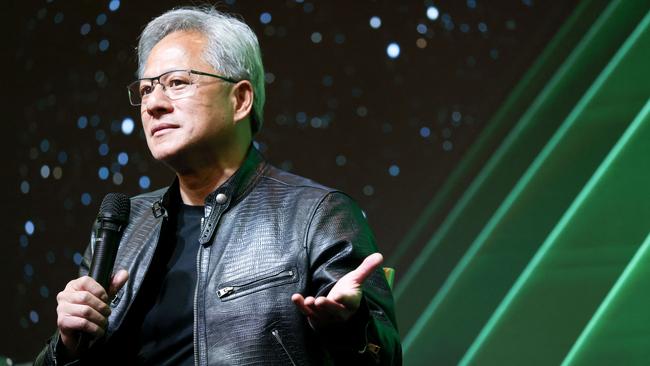Why the onward march of AI and the tech titans demands change
The explosion of AI capabilities will be felt first among the world’s greatest technology companies – how will we regulate them?

Remember the television show The Jetsons?
I am showing my age by declaring I looked forward to watching the Hanna-Barbera produced cartoon The Jetsons. Perhaps I couldn’t articulate it at the time but there was something promising and hopeful about seeing George Jetson arrive home in a flying car, then sitting down to a family meal served by robot maid Rosie.
Some, if not much of that future is almost here.
While flying cars were a dream for decades they may have now arrived. Dozens of well-funded companies have developed quadcopters and aircraft aimed at resolving the road-based congestion that saps hours of our lives each day.
Some of these companies have built viable production vehicles that are taking to the skies.
In China, Ehang is so advanced it has received approval for fully autonomous passenger-carrying air taxis. Meanwhile, in the US there is a plan that provides a path towards allowing similar autonomous flying vehicles.
Elsewhere, the robot start-up Figure, funded by Microsoft, Nvidia and OpenAI, is already demonstrating AI and robots that can reason while serving food and putting away the garbage.
We are clearly witnessing the birth of a new era but I wonder will we be richer or poorer with these advancements?
Governments are racing to make autonomous air taxis safe, and they are working to do the same with the existential threats posed by AI. But once those issues are resolved, what are they doing about the risk that capitalism’s current structure does nothing except reward a few already insanely wealthy people at the top, while making everyone else poorer?
Much has already been written about the displacement of jobs that will occur at the hands of the mass rollout of autonomous robots. Already, thousands of jobs in vehicle manufacturing have been displaced by assembly-line industrial robots designed to carry out repetitive tasks.
These job losses are, however, a far cry from the 180,000 predicted to be lost in auto manufacturing in coming years, or the 300 million jobs Goldman Sachs predicts will be lost or degraded by AI across the US and Europe

What hasn’t been written about as extensively is how the revenue models of the suppliers of these technologies will seek to strip the businesses and the consumers who use them.
Consider, as just one example, a local family-owned mechanic. One might immediately wonder about the advent of simpler and more reliable EVs, those with fewer moving parts, that would serve to undermine the income of this local business community member.
But today, almost all vehicles are repaired by first diagnosing the problem by scanning an error code. Multiple software and hardware systems are now required to be able to diagnose and then repair the issues. And guess what? Those systems are all supplied by a subscription service. And that subscription service provider has the customer by the short and curlies because the systems are an entrenched component of the business. They are a local monopoly that will keep raising their prices (or ‘support fees’).
And the mechanic’s accounting system? Well that’s supplied by Quicken, Reckon or Xero, through yet another subscription.
The hardware, tool, and equipment suppliers are all working furiously to link their devices to the internet, forcing the customer — in this case, the mechanic — to upgrade to a new subscription model for their supply.
The increasing integration of technology has benefits but also equally real costs.
For years we’ve lauded the arrival of SaaS – Software as a Service. We measure the proportion of a company’s earnings that are recurring and celebrate its increase. As the proportion of recurring revenue rises so does the perceived value of the company. However, that increase in value for shareholders might just be derived through an equivalent cost to consumers.
The creation of streaming and smart phones has advanced our world immeasurably but they have also burdened us with rising subscription prices and even addictions to dopamine. There’s always a cost and perhaps governments will need to start looking for solutions through something other than an economic rationalist’s lens.
At once, AI and Automation offer us a Jetson-like promise of an easier, cleaner, and faster future, but AI and automation also carry with them warnings of job losses, entrapped consumers and rising costs. Will the job losses and rising subscription fees squeeze what remaining juices consumers have left in them for the benefit of a few shareholders?
If at all plausible, a different model to the one we have today might be required. Allowing titan-sized companies to grow and monopolise before breaking them up, rinsing and repeating, seems akin to a game of whack-a-mole. Instead, do governments need to collectively consider how to reset the entire system? They can’t regulate the future unknowable side effects of SaaS-based automation and AI, so do they hand these companies and their profits to the community that is forced to subscribe to them? Are the companies that forced the job losses also forced to pay a universal wage?
The disruption caused by the next wave of technology will be significant, the legislation and structures that respond, will, in my view, need to be equally disruptive.
Roger Montgomery is founder and chief investment officer at Montgomery Investment Management





To join the conversation, please log in. Don't have an account? Register
Join the conversation, you are commenting as Logout